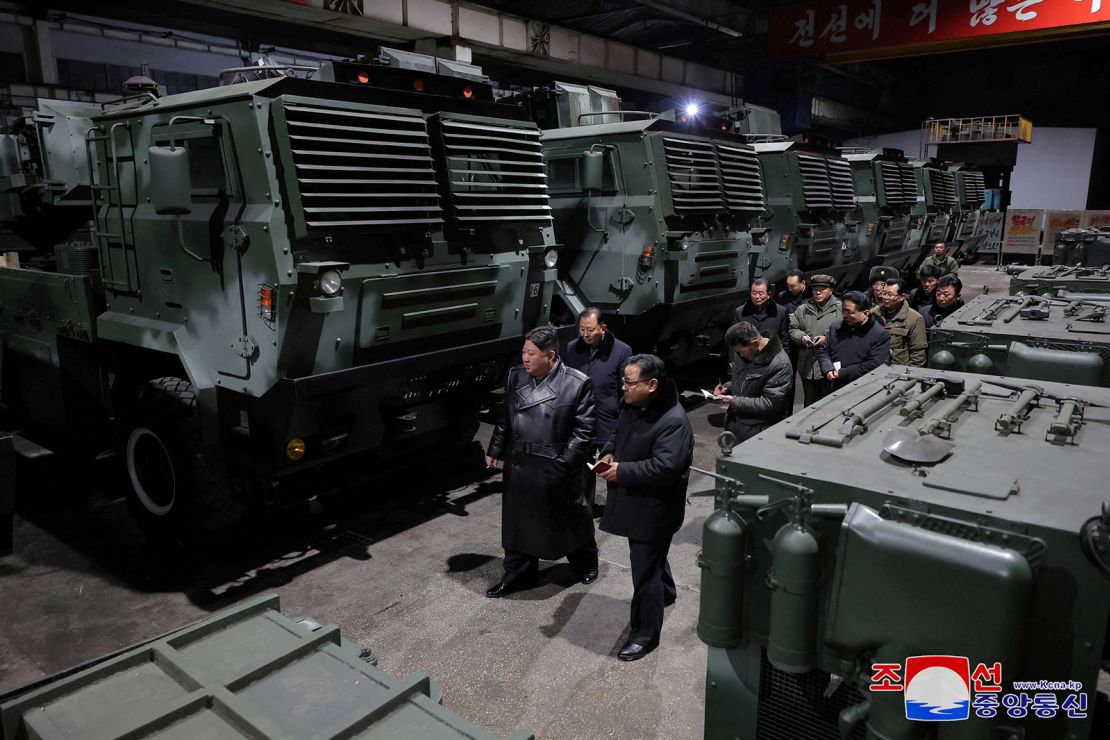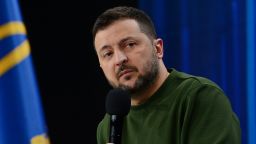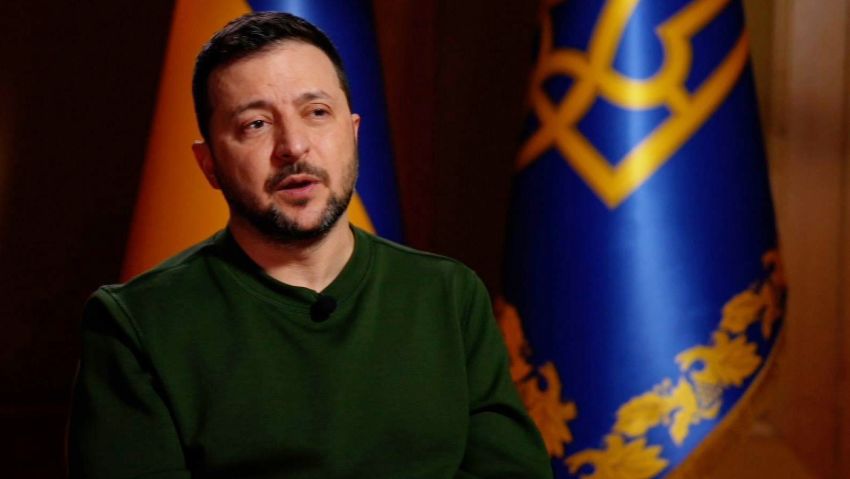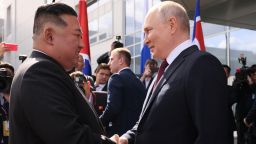North Korea’s munitions factories are “operating at full capacity” to produce weapons and shells for Russia, according to South Korea’s defense minister, as Moscow’s devastating war in Ukraine grinds into a third year.
The latest estimate from South Korea offers fresh clues on the crucial but highly secretive role North Korea is playing to help resupply Moscow’s war of attrition at a time when Ukraine’s own need for vital military resupplies is being held up by predominantly Republican lawmakers in Washington.
The weapons and military equipment, which include millions of rounds of artillery shells, is being delivered to Russia in exchange for shipments of food and other necessities, South Korean Defense Minister Shin Won-sik said Monday.
Since August, Pyongyang has shipped about 6,700 containers to Russia, which could accommodate more than 3 million rounds of 152 mm artillery shells or more than 500,000 rounds of 122 mm multiple rocket launchers, according to Shin’s ministry.

“While North Korea’s arms factories (for non-Russian exports) operate at 30% capacity due to shortages of raw materials and electricity, the factories producing weapons and artillery shells for Russia are operating at full capacity,” Shin said in a meeting with reporters.
In exchange, food accounts for the largest portion of containers from Russia to North Korea, and the food supply situation in the isolated Asian nation seems to be “stable,” according to the defense ministry.
In a fact sheet released Friday, the US State Department said North Korea has delivered more than 10,000 containers of munitions or related materials to Russia since September.
CNN has reached out to South Korea’s defense ministry for comment on the US’ estimate but has not yet received a response.
The deliveries are coming at a crucial time in Russia’s war against Ukraine, with Moscow’s forces conducting a flurry of offensives along the nearly 1,000-kilometer front lines in an attempt to break what Kyiv’s former top general described last year as a “stalemate.”
Russia is in need of fresh supplies of ammunition and shells to sustain its attritional war effort after suffering heavy losses of men and equipment during more than two years of war. Both sides continue to exchange heavy fire on a daily basis, sapping ammunition supplies.
Moscow’s recent advance in Avdiivka, a city that has been on the front lines since Russian-backed separatists launched a rebellion against Kyiv in 2014, show Russia’s ability to wear down Ukrainian forces despite suffering heavy losses due to its sheer size, capacity to send wave after wave of troops to the battlefield, and aerial superiority.
Kyiv is facing challenges on multiple fronts, including struggling with its own manpower constraints and as the supply of ammunition from the West begins to run dry.
Ukraine’s President Volodymyr Zelensky and other Ukrainian and Western officials have said Avdiivka was lost because troops did not have enough ammunition to defend it.
Zelensky told CNN this week that “millions” could die in Ukraine if US lawmakers don’t approve President Joe Biden’s $60 billion aid request for Kyiv.
Without US aid, Ukraine will not only struggle to make any new gains on the battlefield, but it will also find it difficult to keep defending itself this year, Zelensky said.
Concerns over North Korean weapons to Russia
The munitions deliveries from Pyongyang to Moscow have been recorded since just before North Korean leader Kim Jong Un met his counterpart President Vladimir Putin for a September summit in Russia’s far east.
The meeting was a clear sign of closer relations between the two nations, as both countries face international isolation over Moscow’s invasion of Ukraine and Pyongyang’s nuclear weapons and ballistic missile program.
North Korea, which has faced years of international sanctions over its nuclear weapons program, is short of everything from hard cash and food to missile technology.
Intelligence officials in Washington are increasingly concerned about the growing ties between North Korea and Russia, CNN previously reported, and the long-term implications of what appears to be a new level of strategic partnership between the two nations.
Since that summit, North Korea has likely provided Russia with “millions of artillery rounds” over the last year, according to a report published earlier this month by the Pentagon’s inspector general.
In November, South Korea’s National Intelligence Service (NIS) said Pyongyang has exported more than 1 million shells to Russia in 10 separate shipments since early August to support its war in Ukraine.
US officials have previously warned North Korea it will “pay a price” if it provides weapons to Moscow to use against Ukraine.
The White House confirmed last month that Russia has been firing North Korean missiles at Ukrainian cities.
The US and its allies are also concerned about the technology North Korea is seeking from Russia in return for weaponry.
According to two US officials, Pyongyang is seeking technology that could advance its satellite and nuclear-powered submarine capabilities, which could significantly advance North Korea’s capabilities in areas the rogue regime has not fully developed.



